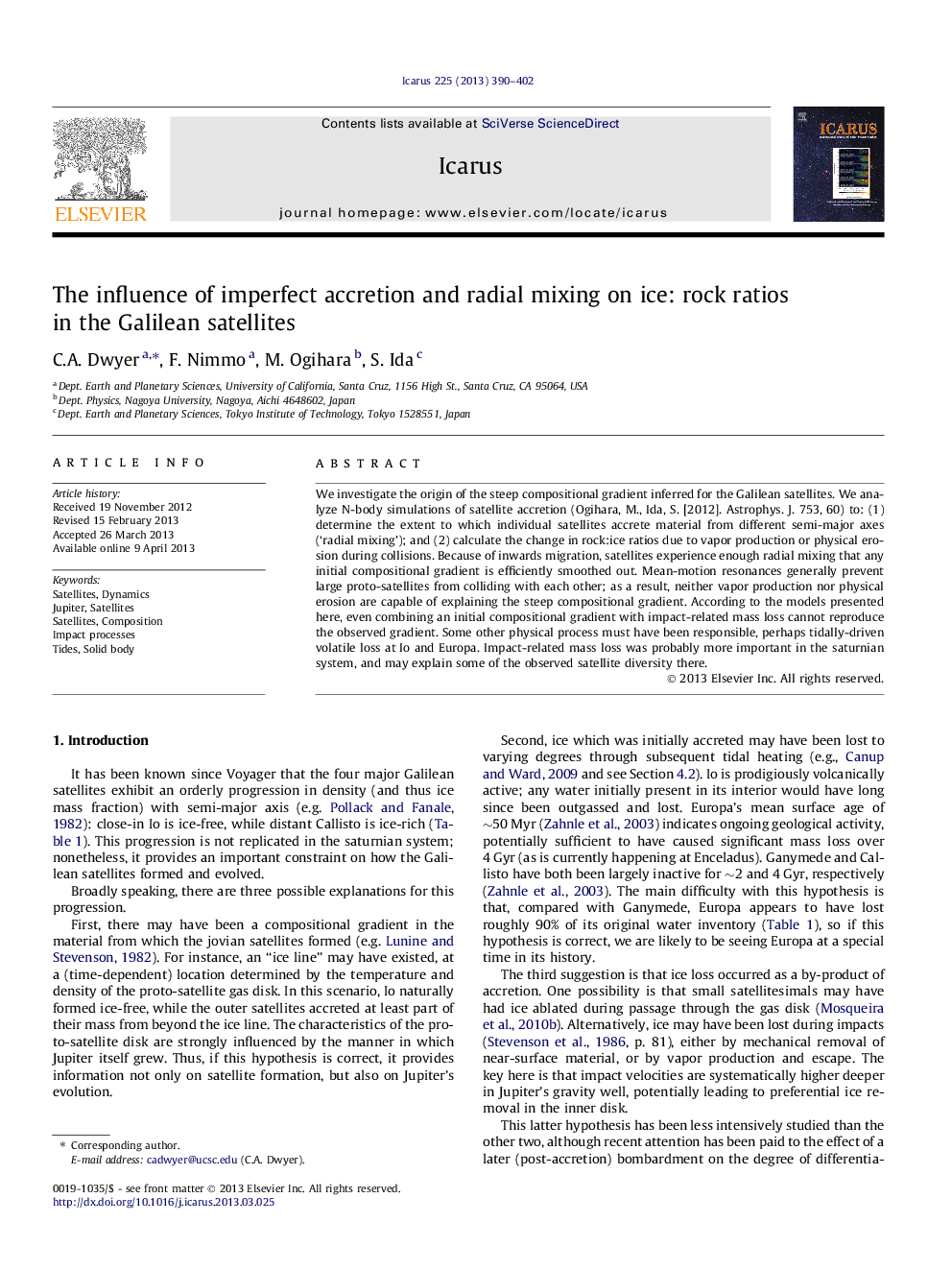| Article ID | Journal | Published Year | Pages | File Type |
|---|---|---|---|---|
| 1773214 | Icarus | 2013 | 13 Pages |
•Impact-related mass loss cannot explain volatile-poor Io and Europa.•Radial mixing efficiently smooths out initial compositional gradients.•Tidal heating may help to explain volatile loss of inner moons.
We investigate the origin of the steep compositional gradient inferred for the Galilean satellites. We analyze N-body simulations of satellite accretion (Ogihara, M., Ida, S. [2012]. Astrophys. J. 753, 60) to: (1) determine the extent to which individual satellites accrete material from different semi-major axes (‘radial mixing’); and (2) calculate the change in rock:ice ratios due to vapor production or physical erosion during collisions. Because of inwards migration, satellites experience enough radial mixing that any initial compositional gradient is efficiently smoothed out. Mean-motion resonances generally prevent large proto-satellites from colliding with each other; as a result, neither vapor production nor physical erosion are capable of explaining the steep compositional gradient. According to the models presented here, even combining an initial compositional gradient with impact-related mass loss cannot reproduce the observed gradient. Some other physical process must have been responsible, perhaps tidally-driven volatile loss at Io and Europa. Impact-related mass loss was probably more important in the saturnian system, and may explain some of the observed satellite diversity there.
